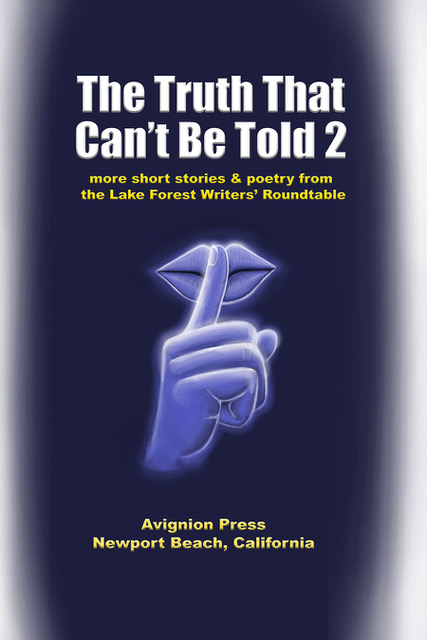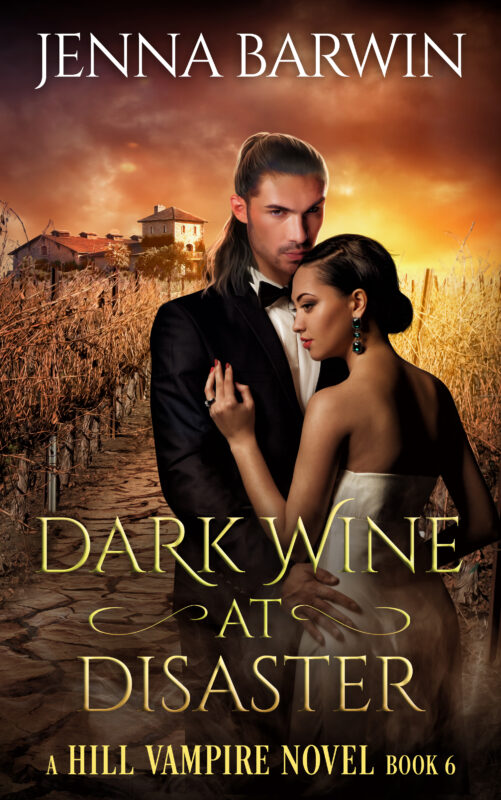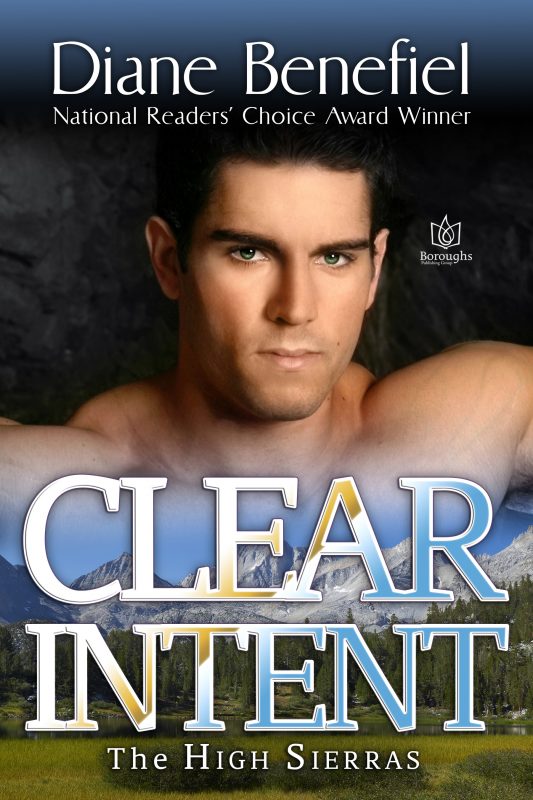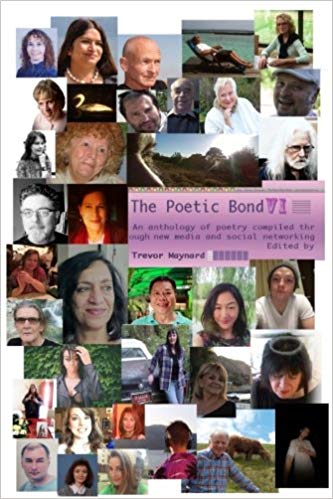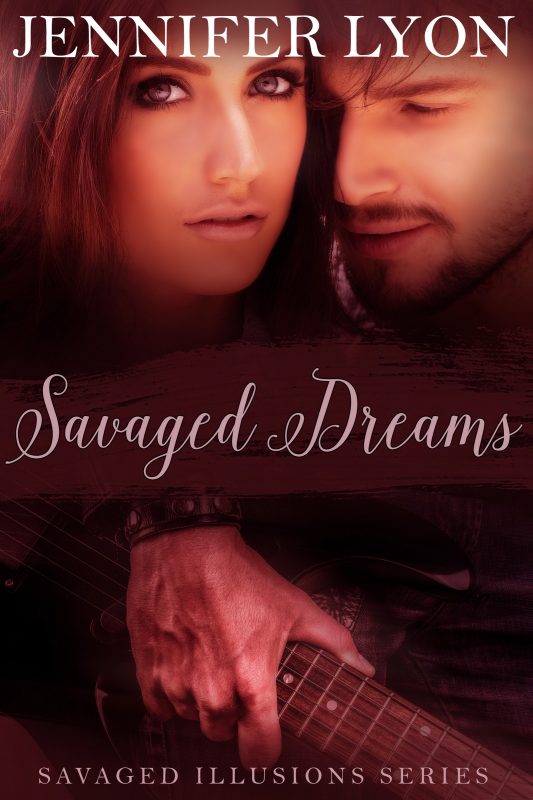SEARCHING FOR THE CORRECT WORD
August 20, 2017 by Meriam Wilhelm in category A Bit of Magic by Meriam Wilhelm tagged as author, sewing, stories, words, writing I was recently at a get together where there were guests of all ages in attendance. We were engaged in a lively discussion about the latest techniques for sewing a baby quilt and I was trying to remember the name of a particular tool I’ve used. Needless to say, I was stumbling around for the correct word.
I was recently at a get together where there were guests of all ages in attendance. We were engaged in a lively discussion about the latest techniques for sewing a baby quilt and I was trying to remember the name of a particular tool I’ve used. Needless to say, I was stumbling around for the correct word.
I said, ‘You know what it’s called. Help me out. It’s um a …thingamajig…you know..’
And so it began…
“Oh, I know what you’re talking about. You mean a whatchamacallit?”
“No, she wants a thingamajiggery”
“Or do you mean a thingamabob?”
“We call those a thingerdoodle.”
“You’re all making it too difficult. Just call it a whatsit.”
“A thingermabobble is what my mom always called it.”
“Maybe a doodad?”
“You mean a oojamaflip?”
Wait – hold on a minute.
Now not only couldn’t I remember the original word I’d been searching for, now I had a second one to worry about. What the heck was a oojamaflip?
I was just trying to remember the name for an Interchangeable Dual Feed sewing machine foot. How did we get so far off track? And who knew there were so many substitute words for thingamajig. By the time I remembered the name I was originally searching for, it no longer seemed important. I was plagued with a new need-to-know word. What did oojamaflip mean and was it the same as thingamajig?
I never did get to talk about this incredible sewing tool as everyone was caught up in their stories of why they use the term they used. In the meantime, I grabbed my phone and typed in oojamaflip. Apparently it’s slang for a thing whose name is temporarily forgotten and used more in Britain than the U.S. It can also be spelled whojamaflip or hoojamaflip.
Next time I forget the name of something I’m going to need to remember to say oojamaflip…that is if I can remember it.

For thirty-five years, Meriam Wilhelm worked in education. From high school teacher to college dean to her favorite job of elementary school principal, she took an excitingly non-traditional pathway, always passionate about shaping young minds. When she retired, something magical happened. Wilhelm was bitten by the writing bug and her chosen genre was paranormal romance – specifically of the witchy persuasion. Now, six books into The Witches of New Moon Beach series, she is bringing her passion for learning to her new profession. A world traveler, Wilhelm has researched the history and culture of witchcraft and found inspiration as far away as Bergen, Norway and as close as her home town. A Redondo Beach resident, she decided there was no better location for her family of witches to reside than the beaches outside her own front door. “I think there is magic in everyone you meet,” Wilhelm says. “You just have to look for it.” In her case, you also have to write about that magic. Currently, Wilhelm is working on book seven, The Witch of Bergen. She is the recipient of the Paranormal Romance Guild Reviewers Choice Award. She is married and the mother of three grown children and a brand new grandma. When not writing or traveling, Meriam Wilhelm can be found at her sewing machine, at yoga class or, of course, reading.
Voice, Style, Tone
August 19, 2017 by Jenny Jensen in category On writing . . . by Jenny Jensen tagged as editing, style. tone, voice, writing
As much advice exists about how to write as about how to vote. TMI? Sometimes it makes me long for a cabin near Walden Pond, a quill pen and a stack of foolscap. (Not really sure what that is but I love the word!) In my experience the best approach is to just write – and then go back and right your writing. Edit.
Voice, Style, and Tone Are All Critical
There’s so much to be aware of when you edit what you’ve written. From the macro view voice, style and tone are all critical. Explanations of those elements vary but we all know they each impact our writing. Some definition is required to make the concepts applicable; for me, style and voice are like fraternal twins – really close but not exactly the same.
Voice and Style
As an editor I’m dialed into the author’s voice after the first three paragraphs of a manuscript. As a reader I know within the first three pages if I like an author’s voice – just like we all know what music we like. Voice is a reflection of the author’s mind and personality and like minds and personality, it develops and matures with age. Depending on the writer’s level of skill and experience I can hear a strong voice, or a well-emulated voice or a developing voice. If I hear a voice that’s not distinct and consistent the writer and I work toward finding her natural rhythm for word choice, phrasing, even punctuation – her voice.
Voice shifts from 3rd person narrative to dialog and differs between characters. Look carefully at the voice of each character. Does the language suit the character? A pierced and tattooed good time girl speaks differently than a buttoned up college professor. An author’s style often changes from story to story, but the voice is always there. I think voice comes from the gut and it grows and develops and gets better with use. Style is more a conscious effort and is changeable from book to book depending on what the story needs.
Tone
Tone is less ephemeral. It’s the mood. Every plot has an overall tone and under that umbrella each scene has a tone appropriate to the action; dialog reflects tone. Tone is what moves the emotions of the story. When you read over your 1000 words per day listen to be sure the tone is always appropriate. A cozy mystery has a murder, of course, but the tone is off if it is described in the tone of a gritty noir.
The body lay crumpled at the foot of the staircase. Pepper drew a sharp breath. There was so much blood.
Versus
Sgt. Pepper stared critically at the broken and bloodied body. The fall down the staircase alone was fatal; the twenty or so bloody gashes were overkill.
Edit
If, at the end of the writing day, you listen with a critical ear you’ll hear your voice, feel the style, sense the moods and know if each is clear and appropriate. If not, then this is the time to right what you write.
Jenny Jensen
Editor
www.e-bookeditor.com

With a BA in Anthropology and English I pursued a career in advertising and writing and segued into developmental editing. It was a great choice for me. I love the process of creating and am privileged to be part of that process for so many great voices — voices both seasoned and new.
I’ve worked on nearly 400 books over 20 years, books by noted authors published by New York houses including Penguin, Kensington, Pentacle and Zebra as well as with Indie bestsellers and Amazon dynamos. From Air Force manuals and marketing materials to memoirs, thrillers, sci fi and romance, my services range from copyediting to developmental coaching.
Having worked in advertising and marketing, I am always cognizant of the marketplace in which the author’s work will be seen. I coach for content and style with that knowledge in mind in order to maximize sales and/or educational potential. My objective is to help the author’s material stand out from an ever more crowded and competitive field.
Learning to Write, Again by Dee Ann Palmer
August 17, 2017 by marianne h donley in category Guest Posts, Writing tagged as death, Dee Ann Palmer, widowhood, writing A week before Thanksgiving, a sudden virulent pneumonia sent my husband, Ron, into heart failure. Fifteen days later, his life ended in an ICU when I asked the staff to turn off life support. Knowing this was what he would have wanted was the only comfort my sons and I felt.
A week before Thanksgiving, a sudden virulent pneumonia sent my husband, Ron, into heart failure. Fifteen days later, his life ended in an ICU when I asked the staff to turn off life support. Knowing this was what he would have wanted was the only comfort my sons and I felt.
In the quiet hush of the nursing unit, our youngest son and I waited for the end, touching and talking to Ron, knowing he could hear us even though he couldn’t open his eyes or respond. Seven hours later, we watched the monitor blip red for the last time as his valiant athlete’s heart gave out. Only a straight red line remained, releasing us from our sad vigil.
My shattered heart said goodbye to the man who had been my college sweetheart and best friend. We had celebrated our 58th wedding anniversary months earlier, and his passing stunned me. My family went into shock. He’d played golf with a friend just ten days before illness struck, and now he was gone?
I was plunged into the post traumatic stress reaction we call grief, but life went on, demanding I take on everything Ron had done for us as well as my responsibilities. The daily rhythm to our marriage vanished and my brain fragmented. Forgetting came easy, focusing was almost impossible. By early afternoon my tears and the emotional drain of losing him had exhausted me. I slept a lot.
People urged me to take time for myself, do something fun. You’ve got to be kidding! I’m drowning under everything that must be done.
Because his mother died at 99, Ron wasn’t prepared to pass at 85. He hadn’t told me how to get into the online stock or bank accounts, what to do with his life insurance or how to prepare our taxes. I didn’t know even little things—like how to set the controller for our lawn sprinklers when to pay the gardener or get the car serviced. My husband had not only taken care of all the usual “man” things around the house—fixing a running toilet or taking out the trash—he’d managed our finances because he had an accounting background. I was a retired RN.
I could have sworn I was the object of some witch’s spell when things began to fall apart—printers and TVs, the electric garage door opener, the cords connecting the wooden blinds in the family room shredded due to age, and the vertical blinds in the living room windows that faced the street stopped closing tightly, and people could see in—see a woman alone—at night.
Chaos. There was no other word for it. How was I going to survive?
My WIP, a novella, had lacked only a thousand words to completion when my old life ended so abruptly. Even had I been able to get my mind in gear, I had no time to write. So I didn’t.
After a couple months, the one pleasure I allowed myself was to let friends drive me to a meeting of our RWA chapter in Orange County, California. I let chatting about writing on the drive in and back, the warm chapter friendships, and discussions about craft and marketing flow around and nurture me.
After one meeting, I came home inspired, opened my computer and reread my novella. Oh, I had no time for this but, when I realized this was a world I could control, I wrote for fifteen minutes.
Deepening my characters as they moved toward their goals in the world I’d created brought surcease from the real one I struggled with every day. Little by little, I finished that thousand words, then it struck home that I’d written myself into a hole: I was rushing the ending.
And so I wrote on. Then, as smooth as silk, I had over 40,000 words and the work was done. Without even thinking about it, I had finished a Book in a Year.
I will never forget Ron or the life we shared. He had a gift for numbers, mine was wrangling words onto paper. I loved him because he encouraged that part of me, love him more deeply now because through the chaos words on paper were what centered me, gave me the courage to figure out my “new life”—as my artist/writer friend, Sheila Hansberger, describes widowhood.
Artists paint, sketch and sculpt, composers compose, and writers write because that is what we do.
It is who we are.
 Dee Ann Palmer is a multi-published, award-winning author who writes sensual romance under this name. As Carolina Valdez, she writes explicit gay and m/f romances in several subgenres. She lives in southern California, is a PAN member of RWA, and belongs to Sisters in Crime.
Dee Ann Palmer is a multi-published, award-winning author who writes sensual romance under this name. As Carolina Valdez, she writes explicit gay and m/f romances in several subgenres. She lives in southern California, is a PAN member of RWA, and belongs to Sisters in Crime.
http://www.facebook.com/author.dee.ann.palmer
http://www.twitter.com/RunnerDeeAnn
https://www.carolinavaldez.com
https://fingerstothekeys.wordpress.com
http://www.twitter.com/carolina_valdez
http://www.facebook.com/author.carolina.valdez
WHERE EAGLES CRY
Jilted by love in 1834, Cara Lindsay sails from Boston to Mexico’s rugged California to begin a new life with a favorite aunt.
More info →News Flash: e-Books Older Than You May Think by Linda McLaughlin
August 16, 2017 by Linda McLaughlin in category The Romance Journey by Linda Mclaughlin tagged as Amazon, e-books, Janet Cornelow, Kindle, Linda McLaughlin, Project GutenburgA few weeks ago, I wrote a blog post about my preference for e-books over print. In it, I talked about reading my first e-book in 1999. Some of the commenters were amazed to hear that (so young) and author Alina K. Field suggested I write about e-book history. This blog post is a revised version of one I wrote in three years before.
News flash: e-books have been around since at least 1971 when Project Gutenberg started digitizing public domain works. The US Declaration of Independence was the first document chosen.

My dear departed friend Janet Cornelow reading on her eBookwise, 2006
I started reading e-books in 1999 on my laptop. I’d gone to the Romance Writers of America conference in Chicago and signed up to moderate a panel. By sheer serendipity, I was assigned to moderate the e-book panel presented by Janet Lane Walters and the late great Jane Toombs, two true e-book pioneers. I came away with an interest in e-books and a couple of samples on 3 1/2 inch diskettes. (Remember those?)
Back home, I read the books on my laptop using either Adobe Acrobat or an Internet browser, depending on whether the format was PDF or HTML. I’m a voracious reader and book buyer, and the house was already full of print books. The idea of being able to store book on my computer seemed like a godsend to me. A way to buy and hoard store books without cluttering my already cluttered house. I was hooked!
Commercial e-books were in their infancy, but dozens of small publishers sprang up, most of them no longer in business. Ellora’s Cave was the best known of the early small e-book houses. My publisher, Amber Quill Press, started in 2002 and closed its doors in 2015. Romance readers got hooked early, and small presses deserve credit for reviving the paranormal romance genre, which NY had lost interest in, for feeding the erotic romance craze and for pioneering gay erotic romance.
While e-book readers were a tiny minority at first, the growth became explosive, often 50% in a year, though sadly has slown since. The numbers didn’t start to hit critical mass until Amazon got into the game with the Kindle 1 in late 2006, though Sony gets the credit for having the first available e-ink reader. There were commercial e-readers available before the Sony Reader and the Kindle: the original Rocket e-book reader, its successor the RCA Gemstar 1100, requiring a stylus to make selections. (You had to press a lot harder than on a tablet.) Also, books could be read on the little PDAs, like the Palm Pilot and Pocket PC. I read a lot on my Sony Clie.

Kindle 1
My RCA Gemstar gave out shortly before the release of the Kindle1. I briefly considered getting a Sony reader, but decided that Amazon had already shown a commitment to the book business which I didn’t see Sony making, so decided to order the Kindle, despite the $399 price. I loved it from the beginning. There was no touch screen, just a wheel for scrolling up and down plus the keyboard. It seems unwieldy now.
Amazon’s real innovation, the one that made it the leader in the industry, was the one-click purchase followed by wireless delivery directly to your device. No more having to buy from the publisher’s site–with different accounts at each site, were we dedicated ebook readers or what?–download the books to your computer and then side load your e-books using the USB cable. Sadly, one-click ordering tolled the death knell of many small publishers.
One-click buying took e-book reading beyond the limits of the technologically proficient among us. The ability to download a sample before buying was (and still is) another popular feature. I was an early adopter of the Kindle 1 and still have my device, though it’s no longer in use. I’ve moved on to a Kindle Keyboard and the iPad.
Do you read e-books? If so, when did you start and what device(s) do you use?
Linda McLaughlin
Website: https://lindalyndi.com
STUMPED
August 15, 2017 by Rebecca Forster in category The Write Life by Rebecca Forster, Writing tagged as building, challenges, inspiration, write life, Writer, writing
The other day I came home to find the men I hired to build my patio sitting in my backyard looking at a stump. This was not a normal stump. This was a giant. Paul Bunyan, Big John kind of stump. I sat down with them and I, too, considered the stump.
“George had to get his chain saw for that sucker,” one of them finally said.
“Took two hours to get it out,” another offered.
“I think it broke George’s saw,” the first chimed in.
“Why didn’t you leave it in the ground,” I asked. “You know, pour the cement around it?”
“We thought about it,” the third said. “It wouldn’t have been right.”
They told me that they had managed to cut it up into the piece we were looking at but that it had been twice as big and buried deep in the ground; a remnant of a primordial tree. Their task had been Herculean. They told me that if they poured the cement over the stump, the darn thing could rot and my steps would fall in, and I would be upset with them because they had poured cement over a stump the size of San Francisco.
“It looks petrified,” I said. “How many years do you think it would take to rot?”
The first guy shrugged, “Twenty. Thirty years.”
I shrugged back. I would probably be dead by the time the stump rotted and my stairs fell in. I guess it was the principal of the thing. They would have known the stump was there.
We sat in the hot sun a while longer. Someone suggested carving the stump into the likeness of the contractor. I liked that idea but no one knew how to carve. I thought we could make it into a table. Eventually, we all stopped looking at the stump. The men moved it out of the way and started work again; I went inside to make dinner.
That stump has now been in my backyard for months. I can’t bring myself to get rid of it. But, like all things that are hard to get rid of, it eventually served a purpose. It taught me a few lessons:
1) Everybody has a stump. It might be in your real backyard, your professional backyard or your personal backyard, but it is undoubtedly there.
2) What you do with your stump will tell you a lot about yourself. Either you will dig it up and deal with it, or you will leave it to rot.
3) If you’re stumped and need help there is always someone willing to work hard with you to take care of it as long as you work as hard as they do.
4) You can never go through a stump but don’t panic. You can go around them, over them and sometimes even under them but that takes the longest.
5) Sometimes stumps are not as big as they look and sometimes they are bigger. Size doesn’t matter. Stumped is stumped.
6) Removing a stump but choosing to keep it as a reminder of what stood in your way is a good thing. When you look at it, you will always know that when it came to you against the stump, you won.

Contact me: http://rebeccaforster.com/
Subscribe and get my 2-book starter library FREE:
Follow me on Bookbub!
Follow me on Facebook
Follow me on Twitter
Affiliate Links
A Slice of Orange is an affiliate with some of the booksellers listed on this website, including Barnes & Nobel, Books A Million, iBooks, Kobo, and Smashwords. This means A Slice of Orange may earn a small advertising fee from sales made through the links used on this website. There are reminders of these affiliate links on the pages for individual books.
Search A Slice of Orange
Find a Column
Archives
Featured Books
THE TRUTH THAT CAN’T BE TOLD BOOK 2
Unrequited love, quiet shame, guttural fear are the truths we hide from the world…often from those we love the most.
More info →SAVAGED DREAMS
How much will she risk for love? How far will he go for fame?
More info →Newsletter
Contributing Authors
Search A Slice of Orange
Find a Column
Archives
Authors in the Bookstore
- A. E. Decker
- A. J. Scudiere
- A.J. Sidransky
- Abby Collette
- Alanna Lucus
- Albert Marrin
- Alice Duncan
- Alina K. Field
- Alison Green Myers
- Andi Lawrencovna
- Andrew C Raiford
- Angela Pryce
- Aviva Vaughn
- Barbara Ankrum
- Bethlehem Writers Group, LLC
- Carol L. Wright
- Celeste Barclay
- Christina Alexandra
- Christopher D. Ochs
- Claire Davon
- Claire Naden
- Courtnee Turner Hoyle
- Courtney Annicchiarico
- D. Lieber
- Daniel V. Meier Jr.
- Debra Dixon
- Debra H. Goldstein
- Debra Holland
- Dee Ann Palmer
- Denise M. Colby
- Diane Benefiel
- Diane Sismour
- Dianna Sinovic
- DT Krippene
- E.B. Dawson
- Emilie Dallaire
- Emily Brightwell
- Emily PW Murphy
- Fae Rowen
- Faith L. Justice
- Frances Amati
- Geralyn Corcillo
- Glynnis Campbell
- Greg Jolley
- H. O. Charles
- Jaclyn Roché
- Jacqueline Diamond
- Janet Lynn and Will Zeilinger
- Jeff Baird
- Jenna Barwin
- Jenne Kern
- Jennifer D. Bokal
- Jennifer Lyon
- Jerome W. McFadden
- Jill Piscitello
- Jina Bacarr
- Jo A. Hiestand
- Jodi Bogert
- Jolina Petersheim
- Jonathan Maberry
- Joy Allyson
- Judy Duarte
- Justin Murphy
- Justine Davis
- Kat Martin
- Kidd Wadsworth
- Kitty Bucholtz
- Kristy Tate
- Larry Deibert
- Larry Hamilton
- Laura Drake
- Laurie Stevens
- Leslie Knowles
- Li-Ying Lundquist
- Linda Carroll-Bradd
- Linda Lappin
- Linda McLaughlin
- Linda O. Johnston
- Lisa Preston
- Lolo Paige
- Loran Holt
- Lyssa Kay Adams
- Madeline Ash
- Margarita Engle
- Marguerite Quantaine
- Marianne H. Donley
- Mary Castillo
- Maureen Klovers
- Megan Haskell
- Melanie Waterbury
- Melisa Rivero
- Melissa Chambers
- Melodie Winawer
- Meriam Wilhelm
- Mikel J. Wilson
- Mindy Neff
- Monica McCabe
- Nancy Brashear
- Neetu Malik
- Nikki Prince
- Once Upon Anthologies
- Paula Gail Benson
- Penny Reid
- Peter Barbour
- Priscilla Oliveras
- R. H. Kohno
- Rachel Hailey
- Ralph Hieb
- Ramcy Diek
- Ransom Stephens
- Rebecca Forster
- Renae Wrich
- Roxy Matthews
- Ryder Hunte Clancy
- Sally Paradysz
- Sheila Colón-Bagley
- Simone de Muñoz
- Sophie Barnes
- Susan Squires
- T. D. Fox
- Tara C. Allred
- Tara Lain
- Tari Lynn Jewett
- Terri Osburn
- Tracy Reed
- Vera Jane Cook
- Vicki Crum
- Writing Something Romantic
Affiliate Links
A Slice of Orange is an affiliate with some of the booksellers listed on this website, including Barnes & Nobel, Books A Million, iBooks, Kobo, and Smashwords. This means A Slice of Orange may earn a small advertising fee from sales made through the links used on this website. There are reminders of these affiliate links on the pages for individual books.












